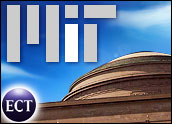
Power cords and chargers may rule the technological world today, but their days could be numbered, thanks to a breakthrough at the Massachusetts Institute of Technology.
It’s called “WiTricity,” and it’s essentially the transfer of power through the air, without wires. It was demonstrated by a team of researchers from MIT’s Department of Physics, Department of Electrical Engineering and Computer Science, and Institute for Soldier Nanotechnologies (ISN), and was reported in Thursday’s edition of Science Express, the online publication of the journal Science .
Members of the team included Marin Soljacic, Andre Kurs, Aristeidis Karalis, Robert Moffatt, Peter Fisher and John Joannopoulos.
The Charging Burden
The test was motivated by Soljacic’s frustration with cell phone chargers. After being awakened repeatedly at night by his cell phone beeping to signal that it hadn’t been charged, “it occurred to me that it would be so great if the thing took care of its own charging,” he explained.
Soljacic started thinking about which physical phenomena could help make that happen.
A few years later, in a test of their theoretical predictions, Soljacic’s team succeeded in lighting a 60-watt light bulb from a power source seven feet away without any physical connection between them.
Resonance, Not Radiation
While past experiments using techniques such as electromagnetic radiation — the technology used for wirelessly transmitting information — have found that too much power is lost, the MIT team used magnetically coupled resonance instead.
Whereas radiation spreads in all directions, coupled resonant objects allow a relatively efficient exchange of energy between them while having minimal impact on other objects nearby.
A classic example of resonance is the opera singer shattering the wine glass: If there were a room with 100 identical wine glasses, each filled up to a different level, an opera singer’s note could cause a glass of the corresponding frequency to explode, while not influencing the other glasses.
Magnetic Fields
That’s acoustic resonance, but the MIT researchers used magnetic resonance instead.
With one copper coil attached to the power source and another at the receiving end, the system fills the space around it with a non-radiative magnetic field. The resonant nature of the process ensures that the interaction between the sending unit and the receiving unit is strong while the interaction with the rest of the environment is weak.
“The fact that magnetic fields interact so weakly with biological organisms is important for safety considerations,” noted Kurs, a graduate student in physics.
Coming Soon
Potential applications — which the research team expects may appear within the next few years — include powering cell phones, laptops, household robots and other battery-run devices, Kurs told TechNewsWorld.
Other applications may include factory robots and wireless sensors, added Karalis, a Ph.D. candidate in electrical engineering and computer science. “This whole technology was developed because of the presence of all these mobile devices,” Karalis told TechNewsWorld.
“The applications are almost identical to those for batteries — if we could use wireless energy instead, we would never need to replace or recharge the batteries, and could even get rid of them in the end,” Karalis said.
In the Meantime
Before WiTricity enters the mainstream, however, there is still work to be done.The tested device operated at only 40 percent efficiency — “pretty good for a first test,” Karalis said, but still clearly in need of improvement. Rechargeable batteries, by contrast, operate at only 70 percent efficiency when new, and degrade over time, he added.
Next, the team plans to begin targeting particular applications and optimizing the device and antennas for good performance, Karalis said.
A Wireless World
“Once, when my son was about three years old, we visited his grandparents’ house,” Soljacic said. “They had a 20-year-old phone and my son picked up the handset, asking, ‘Dad, why is this phone attached with a cord to the wall?’ That is the mindset of a child growing up in a wireless world,” he explained.
“My best response was, ‘It is strange and awkward, isn’t it? Hopefully, we will be getting rid of some more wires, and also batteries, soon.'”












































What if electric cars didn’t need to carry so many heavy and expensive batteries? This would make electric cars inexpensive and have a virtually unlimited range… which is why it will never happen.
Tesla did this in 1890’s and when J.P. Morgan found out he stopped the funding because Tesla wanted electricity to be freely available… (no way to charge for it)…
Now with technology though, each vehicle could keep track of what it used and simply add that to your electric bill.
All that needs to be done is to have the government install these units in roads and parking lots (Millions of local jobs)… What if solar panels were put over every parking lot too? (more jobs…)
What if we used a smaller battery in combination with an ultracapacitor that was constinuously trickle charged by this system?
If vehicles are continuously charged, they have unlimited range!
If they use less batteries they’re cheaper and can be purchased by more people…
Unfortunately, it’s such a good an idea that corporations will never let it happen… HERE, I’m sure Europe will have the system going before us. They’re already way ahead of us on many things…
Isn’t this something Nicolas Tesla did many years ago?
Seems like Nikola Tesla was onto something back in 1891. Too bad it took us over 100 years to catch up